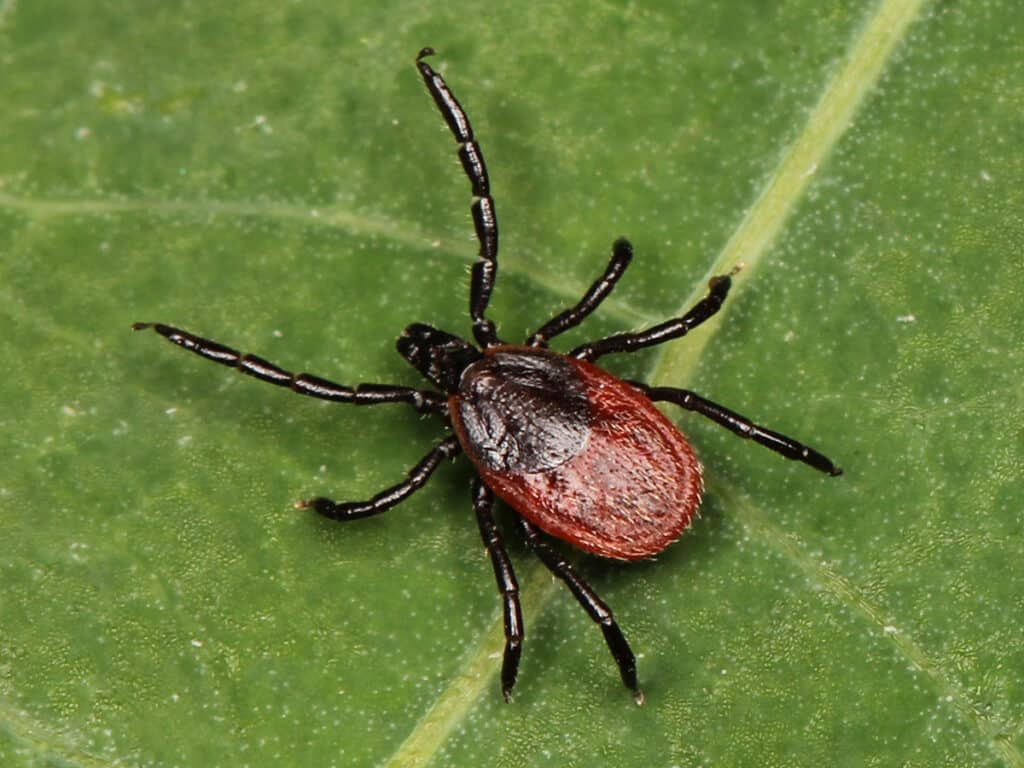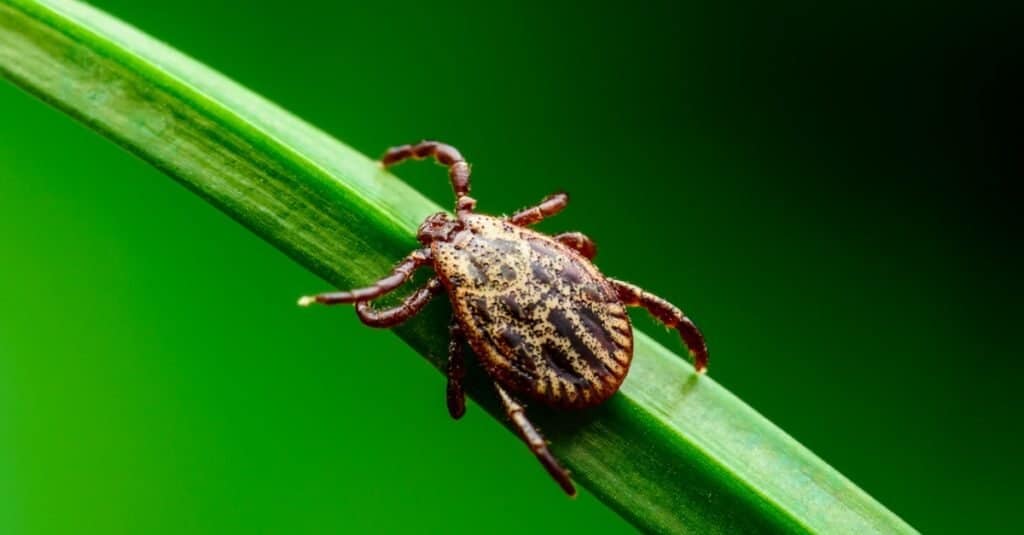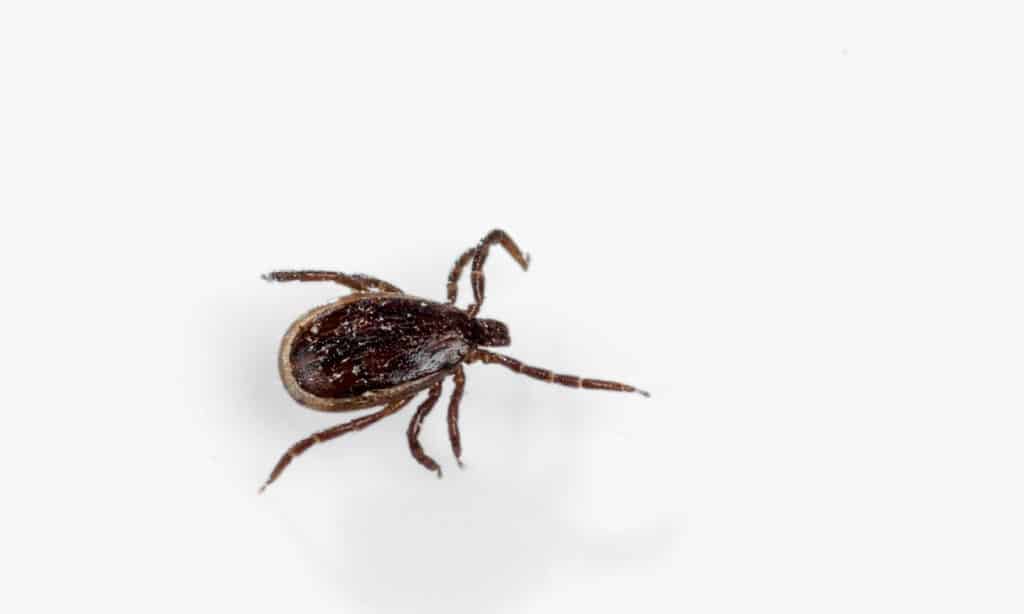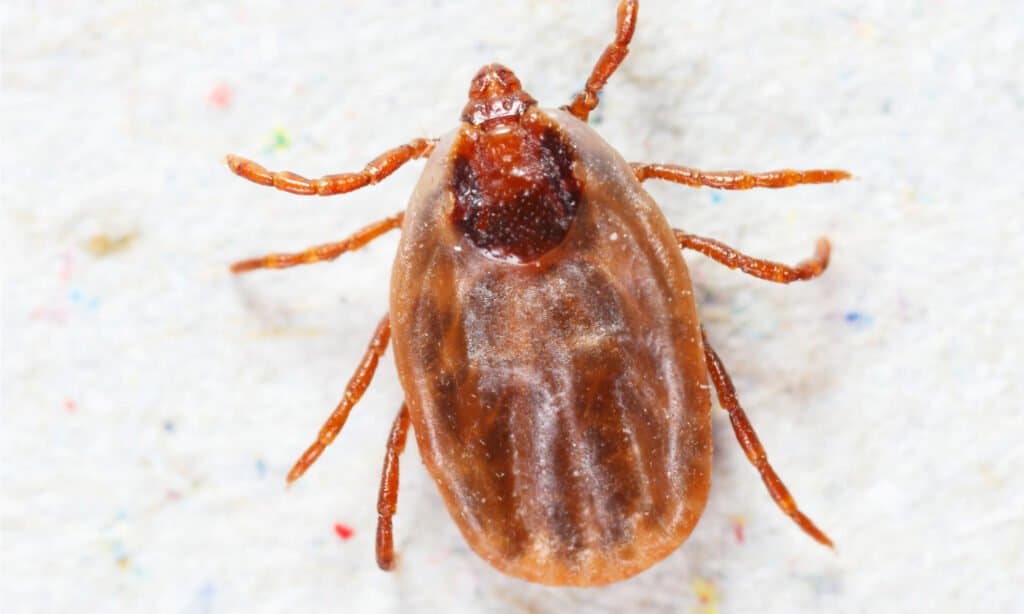Ticks are notorious for their ability to carry and spread diseases. When they’ve latched on, they keep a firm hold. Despite how they suck blood continuously, they may go unnoticed by both pets and humans while they feed. They feed slowly, taking a couple of days until they’re completely satiated. When out looking for a host, they hang out around shrubs and grasses, right at the tips, so when an animal or a human walks by, they can quickly crawl on and start feeding. They can’t jump or fly, so they crawl their way to their hosts, sometimes traveling up their bodies to their heads, where they stick around to fatten up. Below, we share a bit about some of the most common ticks and let you know which smells they absolutely can’t stand.

Common Ticks
Blacklegged Tick
Scientific Name: Ixodes scapularis
The black-legged tick is also commonly referred to as the “deer tick.” This tick feeds on different types of hosts, including humans. When the larvae are tiny just after hatching, they feed on small mammals like mice. When they’re nymphs, they’re brown and about the size of a pinhead. That’s when they start feeding on larger warm-blooded animals and on humans if they can latch on. Once they reach adulthood, their preferred hosts are deer; however, it’s important to note that these ticks carry Lyme disease and are capable of transmitting it to humans.

The black-legged tick is also called the “deer tick.”
©Kaldari / Creative Commons – License
American Dog Tick
Scientific Name: Dermacentor variabilis
The American dog tick is one of the most common types of ticks. Small, warm-blooded animals like mice are the preferred hosts for larvae and nymphs. Once they reach adulthood, they go for bigger hosts like dogs and raccoons. They carry several transmittable diseases, including ehrlichiosis, tularemia, and rocky mountain spotted fever, which can affect humans.

The American dog tick is one of the most common types of ticks.
©iStock.com/nechaev-kon
Winter Tick
Scientific Name: Dermacentor albipictus
Winter ticks prefer large hosts like horses, cattle, and deer. They don’t transfer from host to host — these ticks pick their host at the larvae stage and hang on throughout their entire lives. They do carry diseases that affect the animals they use as hosts, but those illnesses don’t spread to humans.

Despite their frigid-sounding name, winter ticks live in all southern states.
©iStock.com/VladK213
Brown Dog Tick
Scientific Name: Rhipicephalus sanguineus
Brown dog ticks are also known as “kennel ticks” and typically look to dogs as their hosts. It’s unusual for brown dog ticks to pick humans as hosts. They’re different from other types of ticks in that they can survive indoors. These ticks are frequently found in dog kennels, cracks throughout the home, and even under furniture. This tick isn’t a carrier of diseases that can be transmitted to humans.

Brown dog ticks are also known as “kennel ticks.”
©7th Son Studio/Shutterstock.com
How Do You Stop Ticks?
The best method for stopping ticks in their tracks is prevention. Although you may reach for a chemical-laden solution, there are several natural scents that ticks abhor. If they pick up on any of the scents they hate, they don’t latch on, which keeps you and your loved ones safe during tick season. It’s a plus that the scents they hate are actually quite pleasant for humans. You can take your pick from a variety of essential oils.
6 Smells That Ticks Absolutely Hate
To use any of the scents listed below, create your own spray using 100% certified organic essential oils. One simple recipe incorporates lemon or orange essential oil along with tea tree oil and peppermint oil. Mix it with a tablespoon of almond oil and voila! You have a mixture you can apply to your skin before you head outdoors during the tick season.
1. Lemon

When life hands you lemons – make tick repellant!
©RebeccaJaneCall/Shutterstock.com
This is a refreshing, cleansing scent with bright notes that smells good to you and is awful for ticks. Use it to relieve exhaustion and kill any harmful bacteria or viruses in your midst.
2. Orange

Orange juice – it’s not just for breakfast anymore!
©PradaBrown/Shutterstock.com
This scent is delightful like lemon except it has a sweeter scent. It is just as bright and refreshing as its citrus counterpart and has the power to repel ticks while it freshens your space.
3. Lavender

You could surround your yard with lovely lavender to create a tick barrier. (warning: it is toxic to pets)
©ajisai13/Shutterstock.com
Lavender is a relaxing scent that many use to help them destress and settle down for a good night’s rest. Reap its benefits when you use it as a tick repellent! It may be a good idea to keep this repellant for yourself – lavender is toxic to pets.
4. Cinnamon

Ticks hate the smell of cinnamon.
©iStock.com/Diana Taliun
Cinnamon is reminiscent of the holidays with its woody, spicy, and sweet scent. It assists with relieving the symptoms of depression and exhaustion. While gifting you with uplifting benefits, it also helps to keep ticks away.
5. Peppermint

Peppermint repels bad breath and disease-spreading ticks!
©iStock.com/Rawf8
Peppermint is great for morning use when you’re waking up to the day. It’s energizing and helpful with mental clarity — it’s even great at relieving the pain of headaches. Use peppermint essential oil when you need a boost and when you need to repel ticks.
6. Rose Geranium

Rose geranium is more than a pretty flower – it can keep ticks at bay.
Image: mutsu7211, Shutterstock
©mutsu7211/Shutterstock.com
Rose geranium is a fantastic essential oil when you need something to quell your nerves. It’s an uplifting floral scent that works double time to calm you and keep ticks at bay!
Summary of 6 Smells That Ticks Absolutely Hate
The essential oils of these fruits and herbs can be mixed with water to create a tick-repellant. Don’t use on pets – as the solution may be too sticky for fur and lavender is toxic to animals.
| # | Smell Ticks Hate |
|---|---|
| 1 | Lemon |
| 2 | Orange |
| 3 | Lavender |
| 4 | Cinnamon |
| 5 | Peppermint |
| 6 | Rose Geranium |
The photo featured at the top of this post is © Steven Ellingson/Shutterstock.com
Thank you for reading! Have some feedback for us? Contact the AZ Animals editorial team.






